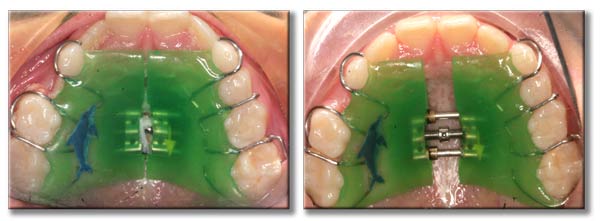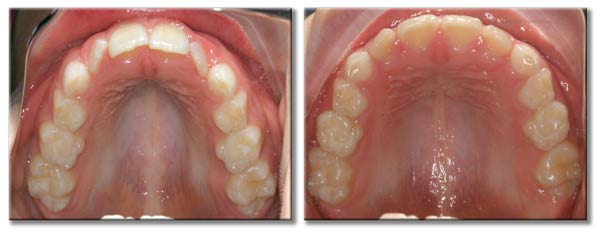The phases of therapy Dr. Sarkissian uses in his practice are:
Interceptive therapy:
age 6 & above
This is the first and very urgent phase to address conditions which, if left untreated, result in a deviated and detrimental craniofacial growth pattern, skeletal jaw asymmetry or deficiency, or orthodontic complications. Examples are abnormal thumb-sucking or other habits, a wrong swallowing pattern such as tongue thrust, premature baby tooth loss, crossbites, mouth breathing, etc. In such cases therapy is initiated as early as age 6.
Many times interceptive therapy in very young children ages 4-7 involves just adding a layer of composite on their baby molars as the only procedure, or as a preliminary to therapy with actual removable appliances. This is called orthopedic bite opening in children.
Craniofacial orthopedics (Appliance therapy):
age 6 & above
Phase I: Arch expansion
Duration: 6 – 12 months
The main purpose of this phase is to restore adequate arch length by influencing or accelerating natural jaw growth tendencies in the pre-puberty and puberty years, to ultimately accommodate the full set of adult teeth, and also to create an esthetic convex facial profile, along with a wide smile. Simple tooth movements and alignments may also be achieved in this phase. If therapy begins as early as age 8, most cases will successfully be concluded in time to avoid fixed braces altogether. Jaw expansion may be achieved by both removable and fixed appliances.
Phase II: Functional orthopedics
Duration: 6 – 12 months
In some children with a retruded (positioned backwards in relation to the skull) mandible or pre-maxilla (The front part of the upper jaw located under the nose), an accelerated forward growth of the involved jaw will become necessary to align the upper and lower jaws in a more favorable position relative to each other, and to achieve an aesthetic convex profile with proper lip support. This type of therapy, called functional appliance therapy, should commence at the beginning of the pre-pubertal growth phase. This has been shown to reduce the chances of future upper airway obstruction, TMJ problems, bruxism and premature tooth wear, sleep apnea, and snoring.

Phase III: Fixed Brace (age 12 and above)
duration: 6 – 18 months
Tooth rotations, alignment, spacing and angulation can only be achieved using fixed braces. As long as the previous phases have created the necessary skeletal size, orientation and foundation, it is now simpler, if needed at all, to achieve all this with brackets. Dr Sarkissian will finish his cases using gentle titanium wires in the “straightwire” technique. Complicated cases may still be referred to a specialist orthodontist.
Handouts
The following are hand-outs you may view and print.
Orthodontic wear and care instructions
Appliance therapy parent education and consent




